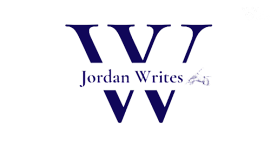Table of Contents:
- Introduction
- Understanding the Capital Stack in Real Estate 2.1 Defining the Capital Stack 2.2 Exploring Capital Stack Strategies 2.3 The Meaning and Importance of the Capital Stack in Real Estate
- Components of the Capital Stack 3.1 Senior Debt: The Foundation of the Capital Stack 3.2 Mezzanine Debt: Bridging the Gap 3.3 Preferred Equity: A Higher Position in the Stack 3.4 Common Equity: The Top of the Capital Stack
- Capital Stack Strategies for Real Estate Investors 4.1 Balancing Risk and Return 4.2 Optimizing Financing Structures 4.3 Factors Influencing Capital Stack Decisions
- Case Studies: Real Estate Projects and Their Capital Stacks 5.1 Example 1: Residential Development Project 5.2 Example 2: Commercial Office Building
- Conclusion
Introduction
The world of real estate investment often involves complex financial structures. One critical element that underpins successful real estate ventures is the capital stack. In this article, we will unravel the concept of the capital stack, explore its strategies, and understand its significance in the realm of real estate.

Understanding the Capital Stack in Real Estate:
2.1 Defining the Capital Stack: Before diving into the intricacies, let's establish a clear definition of the capital stack. In real estate, the capital stack refers to the hierarchical organization of various debt and equity components that collectively fund a project. It represents the different layers of capital, each with its own risk and return profile, and determines the priority of repayment in case of default or foreclosure.
2.2 Exploring Capital Stack Strategies:
Crafting an effective capital stack strategy is crucial for real estate investors. By strategically combining different types of financing, investors can optimize their risk-adjusted returns. We will delve into the key strategies employed in structuring the capital stack, including leveraging senior debt, incorporating mezzanine debt, allocating preferred equity, and considering common equity.
2.3 The Meaning and Importance of the Capital Stack in Real Estate:
Understanding the meaning and importance of the capital stack is essential for navigating the real estate landscape. We will explore how the capital stack impacts risk allocation, return expectations, and the overall feasibility of a project. By comprehending the intricacies of the capital stack, investors can make informed decisions that align with their investment objectives.
Components of the Capital Stack: 3.1 Senior Debt:
The Foundation of the Capital Stack: Senior debt occupies the lowest and least risky position in the capital stack. It usually takes the form of traditional bank loans or commercial mortgages. We will examine the characteristics of senior debt, its repayment priority, and the role it plays in providing stability to the capital structure.
3.2 Mezzanine Debt: Bridging the Gap:
Mezzanine debt acts as a bridge between senior debt and equity. It fills the gap in the capital stack and offers additional leverage to investors. We will delve into the features of mezzanine debt, its position in the stack, and how it caters to investors seeking higher returns.
3.3 Preferred Equity: A Higher Position in the Stack:
Preferred equity holds a higher position in the capital stack compared to common equity. We will explore the benefits and considerations of preferred equity, including its fixed return or priority distribution and its role in attracting investors seeking stable yet higher-yielding investments.
3.4 Common Equity: The Top of the Capital Stack:
Common equity represents ownership in the property or project. As the riskiest layer of the capital stack, common equity offers the potential for the highest returns. We will examine the rights and risks associated with common equity, including profit sharing, voting rights, and the challenges faced by investors in this position.
Capital Stack Strategies for Real Estate Investors: 4.1 Balancing Risk and Return:
Real estate investors need to strike a delicate balance between risk and return when structuring their capital stack. We will discuss various risk factors and considerations that influence capital stack decisions, ensuring investors make informed choices that align with their risk tolerance and financial goals.
4.2 Optimizing Financing Structures:
Optimizing the capital stack involves meticulous planning and analysis. We will explore strategies to optimize financing structures, including assessing the appropriate mix of debt and equity, negotiating favorable terms, and mitigating potential risks.
4.3 Factors Influencing Capital Stack Decisions:
Several factors influence capital stack decisions in real estate. We will examine variables such as project type, market conditions, investor preferences, and exit strategies. By understanding these factors, investors can tailor their capital stack to meet specific project requirements.
Case Studies: Real Estate Projects and Their Capital Stacks:
5.1 Example 1: Residential Development Project: Through a detailed case study, we will analyze a residential development project and its corresponding capital stack. This will provide practical insights into how different financing layers are strategically assembled to support the project's success.
5.2 Example 2: Commercial Office Building: We will explore another case study involving a commercial office building, examining the capital stack configuration and its implications. This real-world example will shed light on the complexities and considerations involved in capital stack decision-making.
Conclusion:
The capital stack definition serves as the backbone of real estate financing, offering a structured approach to balancing risk and return. By understanding the components, strategies, and significance of the capital stack, investors can optimize their real estate investments and navigate the intricacies of the industry with confidence. Embracing the power of the capital stack opens doors to new opportunities, paving the way for successful ventures in the dynamic world of real estate.





2 Comments
whiteslate insurance
ReplyDeleteBusiness Insurance
Personal Insurance
Service
Make a Payment
Need to File a Claim?
Add Driver
Remove Driver
ouija board
ReplyDeletehexagon shelves
wheel of the year
hexagon shelf
moon shelf
is the ouija board real
crystal shelf
wood shop
apothecary drawers
crystal display
crystal display case